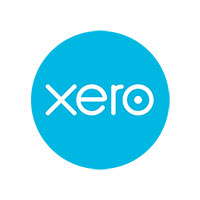
In this final article in our year end series, we conclude with a couple of capital gains tax points, but we start with looking at how Gift Aid donations can help reduce your tax bill.
Give and save
Giving to charity under Gift Aid can result in a win/win for both the donor and the charity.
Making a Gift Aid donation will reduce your tax bill for the year in which the donation is made if your total income is above the 40% threshold (£46,350 for 2018/19). Taxpayers resident in Scotland can save tax with Gift Aid donations if their total income, including earnings, is above the 21% threshold (£24,000 for 2018/19). Alternatively, you can shift the tax benefit of some or all of that gift back one year by telling HMRC on your tax return. This can be useful if your marginal tax rate was higher last year than in the current tax year.
The gift to be carried back must be made before you file your tax return for the earlier tax year. Say you make a Gift Aid donation of £2,000 on 21 December 2019. If you submit your 2018/19 tax return after that date (it’s due by 31 January 2020) you can include a claim in that return to carry back up to £2,000 of the donation you made on 21 December 2019, which will reduce your 2018/19 tax liability.
Gift Aid can reduce your income used to calculate the clawback of Child Benefit (income over £50,000) and the reduction in Personal Allowance (income over £100,000). It can also increase your higher rate or additional rate threshold, which determine whether you receive a Personal Savings Allowance of £1,000, £500, or nil.
To make a valid Gift Aid donation, you must declare that you will pay sufficient tax to cover 25% of the value of your gift in the year the gift is made. If you give £800 under Gift Aid, you must pay Income Tax and/or Capital Gains Tax of at least £200.
Planning gains
Everyone has an annual exemption for Capital Gains Tax (CGT) of £11,700 for 2018/19. This is wasted if you don’t make capital gains in the tax year. You can’t carry forward any unused exemption to a different tax year, or transfer the exemption to another person.
If you are planning to dispose of assets which will create capital gains, you can save tax if the disposals are spread over several tax years. This is easy to do if your assets can be split into separate chunks, like shares. Each sale can then be calculated to produce a gain of less than £11,700.
If the asset must be sold in one go, you could reinvest part or all of the gain in Enterprise Investment Scheme (EIS) shares (if you are prepared to take a risk). This will defer the gain until the EIS shares are sold. You can sell sufficient EIS shares in later years, so the gain is covered by your annual exemptions.
When you give a valuable asset to a relative, the disposal is treated like an open market sale, and the deemed gain is taxable. However, gifts to your spouse or civil partner don’t create immediate taxable gains, as the recipient takes over the transferor’s CGT cost. You can use this transfer to share the ownership of a property, and hence the gain, between two people and thus use two annual exemptions in one tax year.
Legal advice should always be taken when giving away land or buildings, or a share in such property. Stamp duty land tax (or similar taxes in Scotland or Wales) may be payable if the property is mortgaged.
Planning to sell
Finally, the conditions for Entrepreneur’s Relief are changing from 6 April 2019.
Entrepreneurs’ Relief can reduce your tax rate to 10% on a gain of up to £10m on the sale of a business or shares in your trading company, where certain conditions are met.
For share sales, there are five conditions which you must meet for, currently, at least 12 months ending with the date of the sale:
- hold at least 5% of the ordinary share capital of the company
- hold at least 5% of the voting rights of the company
- be entitled to at least 5% of the distributable profits available to the equity holders
- be entitled to at least 5% of the assets available for distribution to equity holders on the winding up of the company
- be an employee, director or company secretary of the company or of another company in the same trading group
If you plan to sell your company after 5 April 2019 the above conditions will have to be met for at least 24 months ending with the date of sale.
Finally, if you are planning to step back gradually from your company, take care not to cease to be an employee or director before you sell your shares, if you do, you may miss out on this valuable tax relief.
Please contact Mark Wildi or Vinnie Rome if you would like to discuss any of the tax planning points covered in this series, on 1689 877081 or complete our online form.




